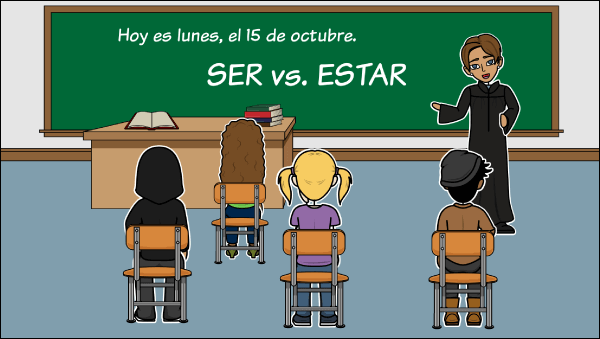Ser vs. Estar Lesson

Practice these verbs with the exercises below:
SER and ESTAR = To Be
SER
(Yo)Soy – I am
(Tú) Eres – You are
(Él/Ella/Usted) Es – He/She/ It is/ or you formal
(Nosotros/as) Somos- We are
(Ellos/Ellas/Ustedes) Son – They/ All of you (plural) are
ESTAR
(Yo) Estoy – I am
(Tú) Estás – You are
(Él/Ella/Usted) Está – He/ She/ It is
(Nosotros/as) Estamos – We are
(Ellos/Ellas/Ustedes) Están- They/ All of you (plural) are
When to use “SER”:
* To identify people:
Example: Ella es maestra. = She is a teacher.
* To express nationality:
Example: Yo soy de Los Estados Unidos. = I am from the U.S.
* To express what something is made out of:
Example: La casa es de madera. = The house is made out of wood.
* With “para” to tell what something is intended for:
Example: Las flores son para mi hermana. = The flowers are for my sister.
* To tell the time:
Example: Son las tres y cinco PM. = It’s 3:05 PM.
* To express possession:
Example: Ese libro es de Juan. = This book is Juan’s.
* To express a characteristic:
Example: Eduardo es muy alto. = Eduardo is very tall.
* To express the date:
Example: Hoy es lunes. = Today is Monday.
When to use “ESTAR”:
* To express location:
Example: Estoy en la casa de María. = I’m in Maria’s house.
* To express health:
Example: Él está enfermo. = He is sick.
* To describe conditions:
Example: Ellos están tristes. = They are sad.
* To express what you are doing right now:
Example: Estoy caminando. = I am walking.
